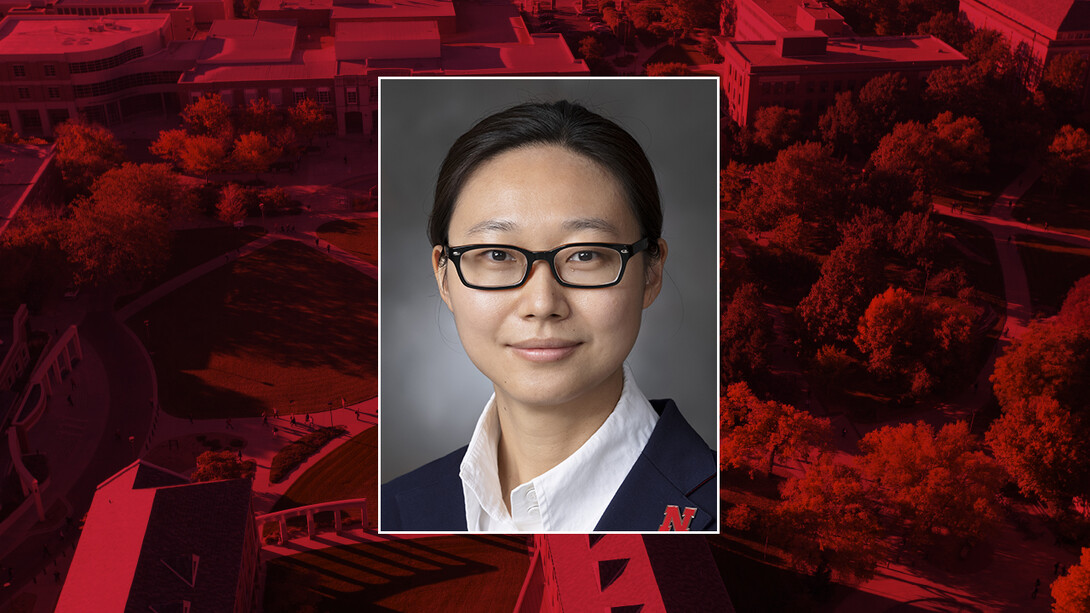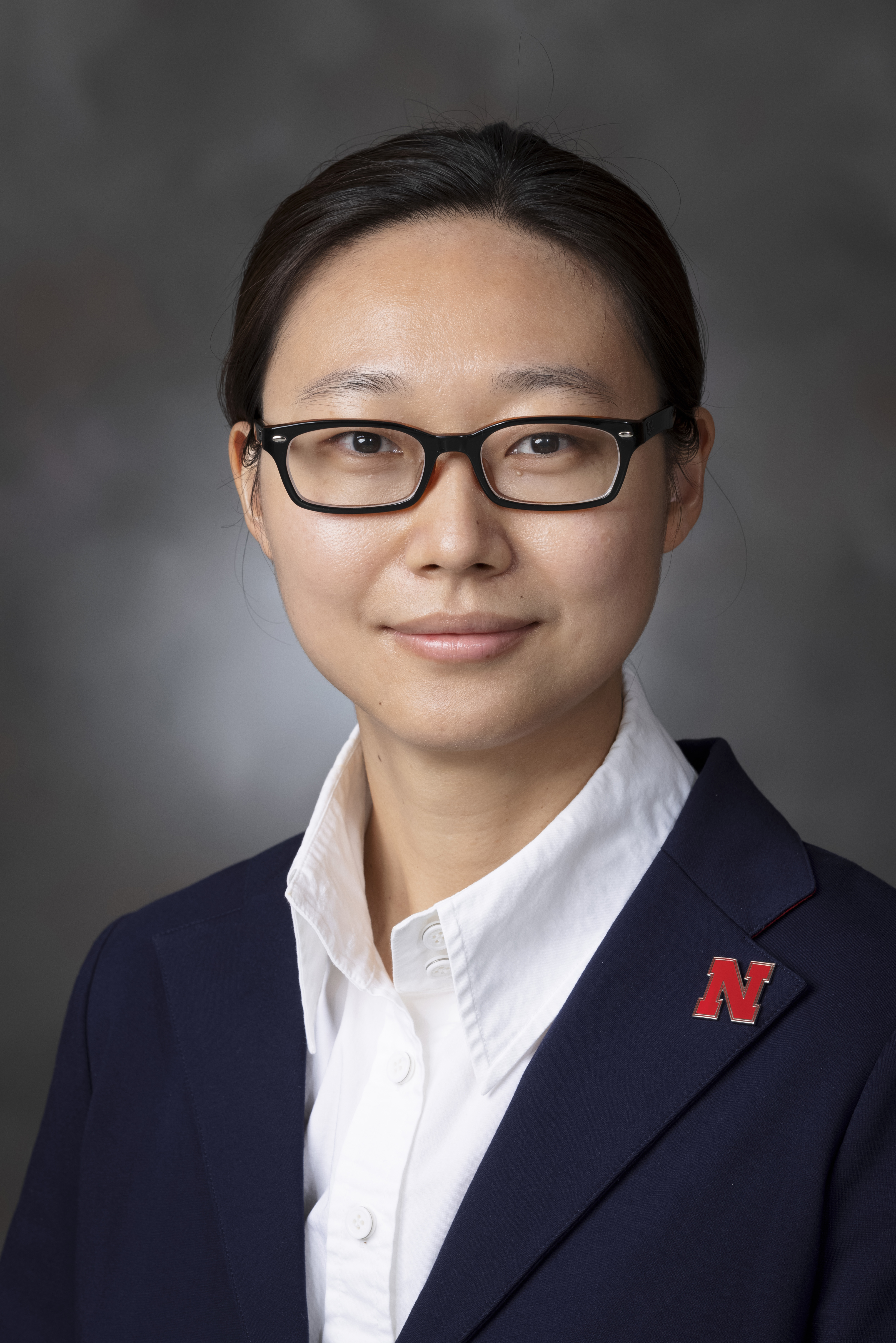
As technologies like virtual reality, smart health applications and digital twinning take hold, the demand for wireless and broadband connectivity continues to boom. To meet the ever-growing need for bandwidth, a Husker computer scientist is using an $812,995 grant from the National Science Foundation’s Faculty Early Career Development Program to unlock the potential of a lesser-trafficked portion of the electromagnetic spectrum.
Shuai Nie, assistant professor of computing at the University of Nebraska–Lincoln, will use the five-year grant to explore how to open the terahertz frequency range to everyday users transmitting wireless data. By opening access to an underutilized band of communication, Nie will help ameliorate spectrum scarcity and begin to close the digital divide — the term describing unequal access to digital technology. She’s particularly focused on boosting connectivity in rural areas, where internet access is especially scarce.
“Most of the time, when people are talking about advanced technologies, they’re referring to utilization in cities, since cities have more residents and more traffic,” Nie said. “But for the majority of Nebraska and other rural areas, wireless connectivity, let alone broadband access, is an issue. Farmers and other rural businesses don’t enjoy the fast connectivity that their urban counterparts take for granted.”
That divide is represented in the Bureau of Sociological Research’s most recent Nebraska Snapshot, with only 26% of Nebraskans living on a farm or in open country reporting access to dependable internet. In contrast, 50% of those living in a town or city reported having very dependable internet.
Nie’s CAREER grant will establish the Midwest’s first testbed to measure and test terahertz-frequency networks, which are expected to be a key component of sixth-generation wireless technology, or 6G. The new equipment will allow Nie’s group and Husker students to develop and test the mathematical models and algorithms that will enable terahertz channels to operate smoothly despite an environment that is constantly evolving: Factors like weather fluctuations and crop growth, which changes the plants’ shape and height, are capable of influencing the terahertz networks.
That’s because terahertz waves are so short. Unlike radio waves, which constitute the bulk of today’s wireless communications, terahertz waves cannot travel long distances and are susceptible to path loss, meaning they are easily dissipated or scattered when they encounter obstacles. To this point, that has been the chief obstacle to widespread use of the terahertz communications band.
To overcome this hurdle, Nie focused her graduate work on methods for elongating terahertz signals to compensate for path loss. Her work suggested that various antennae and antennae configurations could increase travel distance for terahertz signals, but much of that research remains theoretical — as is most of the work in the field. The new testbed will help change that.
“In the Midwestern states, there is very little research infrastructure dedicated to high-frequency communication, especially in the terahertz range,” Nie said. “With the new testbed, we can not only conduct experiments to study terahertz communication in rural areas — which few people have done so far — but we can also train students and attract researchers from Midwestern states who don’t have the capability to do this.”
The ability to conduct testing in agricultural settings is pivotal, as emerging techniques in precision agriculture and smart farming require real-time, reliable access to data from the fields. To build operable networks, researchers must understand the unique factors that could interrupt wireless communications on a farm — extreme weather and crop characteristics like stage of growth and moisture content, for example.
“We want to capture these kinds of changes so we can design more accurate channel models and algorithms that can accommodate these different variations,” Nie said. “Ultimately, if we develop a solution that accurately reflects reality, then customers don’t have to pay extra money for overhead that comes with redundancy. This is critical for future network design, especially in rural communities.”
With Husker engineer Yufeng Ge, Nie will conduct the first rural terahertz network experiments at the Spidercam Field Phenotyping Facility, part of the Eastern Nebraska Research, Extension and Education Center near Mead, Nebraska. A major goal is to develop networks that are self-adaptive, meaning they are capable of healing themselves if weather or other conditions disrupt the channel. This would allow users to quickly reestablish connectivity under any circumstance.
The terahertz testbed will elevate Husker students’ classroom experience. Nie is launching a new graduate course at the university focused on next-generation network architecture that will allow budding engineers to conduct experiments using Nie’s cutting-edge equipment, an experience not available at other institutions in the region. In addition, undergraduate students participating in a robotics-focused Research Experiences for Undergraduates program at Nebraska will leverage the testbed to gain experience in 6G wireless communications.
Nie will also expand her partnership with Girls Code Lincoln, an organization that teaches girls about technology. She hopes to take programming to girls in Nebraska’s rural areas, where exposure to STEM enrichment is often less frequent.
The National Science Foundation’s CAREER award supports pre-tenure faculty who exemplify the role of teacher-scholars through outstanding research, excellent education and the integration of education and research.








